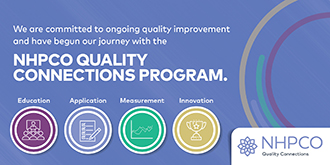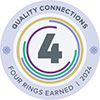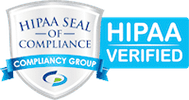Hospice care: the story of a mother’s passing (Claremont Courier, March 2017)
My sweet mom passed away January 8 at the relatively young age of 74. Her death wasn’t unexpected, but it was rapid.
She had beaten breast cancer in 2008, but it recurred in August of last year, this time with the additional diagnosis of bone cancer. Her oncologist was optimistic that with hormone therapy-mom dismissed outright the possibility of chemotherapy after having seen her sister and mother both devastated by the treatments – she could live another three or four years, with little side effects.
But mom wasn’t up for it. She said she didn’t want anything other than to be comfortable and let nature take its course. The cancer doc was taken aback, and revised her prognosis to a year. I was angry, to be honest. I thought mom should want to have more time than just a year, and it seemed like such an easy thing to get. We ended up getting five months.
It was rough to hear my mom say she was done with this life. I’m an only child. My father died in 2002, and even then I’d only known him for the last 10 years of his life. It’d pretty much always been just mom and me.I couldn’t imagine my life without her kindness, caring and humor. I couldn’t imagine watching my three young kids grow, graduate, fall in love and start families of their own without my mother’s help and guidance. But it wasn’t up to me. My mom’s life was hers.
“I’m just tired, honey,” she said to me shortly after making her decision. I was dumbfounded. But in time I came to respect and accept her choice. I didn’t like it. But I loved her, so of course I’d support her wishes.
The first few months were relatively good. After what seemed like years of unreliable health-both physical and mental-she seemed to get a boost from knowing death was coming. Go figure. I tried to get her to take trips with me to places she loved, but she didn’t want to travel. She just wanted to be still, in her comfort zone, which mostly meant hanging around her Pomona home with occasional lunches and dinners out.
In mid-October she was complaining of back pain. Her oncologist found the cancer had spread to her ribs and spine and suggested she begin hospice care. This too was rough for me to hear. I thought we’d have her for another summer.
Our first call went out to a local hospice care provider. We got her “enrolled,”‘ they brought in tables and chairs and machines and pills. Then they went away. Days passed and we didn’t hear from them. Mom wasn’t doing well. Her pain was relatively under control-morphine works-but she was getting very forgetful and was sleeping all the time. I reached out to the hospice folks to see if they could be more attentive and adjust her meds. After some frustration, neither mom nor I were satisfied with her level of care, so we ended up firing them.
Since her diagnosis, I had a handful of friends reach out and suggest we use VNA Hospice & Palliative Care of Southern California. The fact that folks I respected who had recently gone through the loss of a parent all recommended VNA made it an easy call. I am so very glad that I did. The new company was quickly on board. They told us they were there for us, 24 hours a day. Immediately both mom and I felt the anxiety lifting.
Mom’s primary VNA nurse, Cathy Griffin, turned out to be an angel, Ms. Griffin, 60, had a lot in common with my mother. Both are kind, friendly, caring and, as a plus for my mom, spiritually minded. My atheism was always a bummer for mom. She made many attempts over the years to woo me over to God’s way. I could never buy in. But Cathy was there to talk about faith with mom in the final months of her life, and I think it was really good for her.
Mom’s health went from bad in November to worse by the time the holidays drew near. On Christmas day, after a week spent barely able to make it to the restroom, she insisted on coming over to my house to see the kids open their gifts. I was skeptical, to say the least.
I arrived Christmas morning to pick her up and she was uncharacteristically disheveled, sitting on her sofa with her blouse unbuttoned-an alarming situation as she was always so well-coiffed and put together – breathless just from trying to dress herself. I tried to talk her out of coming over. We could come she did. We got to my house and got her oxygen sorted. She sat down in her wheelchair, ate a home-cooked Christmas dinner and smiled, laughed and enjoyed herself. It was beautiful.
0n the way back to her house that day I told her how glad I was to see her so happy. We both cried a little. She got home and I got her in her bed and she slept hard, for the entire night, something she hadn’t done in weeks.
I’d always planned on moving into mom’s house when the time came. I didn’t realize it then, but that day was here. By the 28th of December, she was having difficulty getting to the restroom and her shortness of breath was getting worse. My kids and I packed some clothes into some bags, a few toys, our toiletries and a guitar and decamped to mom’s place.
The physical realities of dying are messy. I wasn’t prepared for the round-the-clock-ness of it. It was like having an infant, but instead of running on the adrenaline from the joy of new life, the sadness of watching life slip away had the opposite effect.
“It’s not pretty,” Ms. Griffin agreed. “It’s not a movie. You don’t sit there with your hands folded and pass away. Quite often it’s not what you would hope or envision.”
I did find moments of joy. In what I now see as mom’s final gift to us, she had about an hour of lucidity two nights before she died. She had been heavily sedated for a week. On the night she really began her heavy medicated state, I had dinner with her. We talked, but it was nothing special. I didn’t know it was one of the final conversations we’d have. So after a few days of her being effectively comatose, I felt I’d missed my final chance to tell her I loved her one last time and thank her again for everything she did for me and so many others.
With the nurse gone for the day, my best friend Christine called and we started talking. We’d been on the phone quite a while when she asked if she could speak to mom. I told her she hadn’t spoken in days, and that at this point she rarely opened her eyes at all. But I put the phone up to mom’s ear anyway. As Christine started speaking, mom’s eyes opened wide, and she started talking. She had a conversation for about 30 seconds! I was in tears. I told my friend that I wasn’t sure what had just happened, but that I was going to try and talk to mom. I spent the next few minutes with my mom, holding her hand and talking to her. And she was present and fairly lucid and I got to tell her everything I wanted to tell her. I called my kids in and they got to talk to her. It was magic.
When she finally said she was tired after about an hour and slipped off to sleep, I bawled. I’ve never cried like that before. It was a primal thing that came from a deep place.
That would be the last time my sweet mother was truly present with me. Her last days weren’t ideal. She began to exhibit alarming side effects from her ever-increasing reliance on morphine. She was hallucinating, and the visions weren’t pleasant. At one point she was screaming and thrashing, accusing me of trying to kill her. She even tried to bite me.
It was the most heartbreaking and real experience of my life. I had help, though, from my wonderful cousins Chris, Caroline and their son Ben and my incredibly selfless and kind girlfriend Lisa. Also, I began taking VNA up on that 24/7 promise they had made. Nurses arrived at all hours of the night to help when things went off the rails, as they often did in those last days.
Claremont resident and palliative and hospice care Dr. Timothy Dauwalder was the physician in charge of my mother’s care. “I think a lot of times people have a tendency to romanticize hospice death like it’s this beautiful harp situation,” he said. “And you know, it can be really ugly and very difficult. But we are there, even though that. And I think the beauty in telling a person, even if it’s without words, that they are enough, and they are okay as they are, that doesn’t happen very often. And that really is the way I applied it to me; “You’re okay as you are; how can I help you suffer less?”
Hospice care workers are with people at their most intimate, vulnerable moments of their lives. It’s a crushing burden, it would seem to me. But the grace and professionalism of Ms. Griffin, Dr. Dauwalder and the other VNA nurses and social workers I came into contact with contradicted this perception. Unlike working in a medical office or hospital, there is no immediate physical support system on which to rely.
It’s an emotional high-wire act, Ms. Griffin said. “Not every living situation is ideal,” she added. “But what I have to keep in mind is everybody has the same need and the same want: comfort and safety. And it doesn’t matter what your living situation is. That is a basic need. And that’s my job.”
Not everyone is ready to have a stranger in their home when their loved one is dying. And they all die. That’s what hospice workers do: help people die. And that, I think, is what I came to respect most from these people: the day-in, day-out reality that all their patients going to die, and usually soon. It must be incredibly sad to live this way, I thought.
“But that’s the beautiful part,” Dr. Dauwalder said. “I could avoid feeling and miss it. There are times when I have to take a moment to have my feelings, and then I get back to what I do with boundaries that I think are safe and strong and sustainable for me. But I don’t find that there’s a limitation for my capacity to love people. Every day is a new day to care for somebody. And it only gets better. It is hard, but people are the most genuine, and all of our prejudices are just irrelevant. It’s a beautiful place.”
Mom and I had hoped her hospice care team would help to make her last days as pain-free as they could be. They weren’t perfect, but Ms. Griffin and Dr. Dauwalder and the rest of the team worked tirelessly to try and soothe her suffering.
“I don’t pretend to take all suffering away, I just don’t pretend not to see it, and not to try to help, and to try to be a facilitator of unity in the care plan that doesn’t alienate those to suffer alone,” Dr. Dauwalder said. ”I’m the first person to say we can’t take away all suffering, and the inevitability of death and the inevitability of suffering is real, and there are magnitudes to that. My job is to understand that the best I can, fix it when it’s fixable and curable, address it to the best that I can, but also know that even though technically adequate, sometimes medical treatment can be the source of suffering, also.”
In the end, mom went quietly, in the middle of the night, in her home, with her dogs, a VNA nurse and me. It wasn’t perfect, but it was as close as we could get to what she wanted. It was nice to be able to give her that, after all she gave me.
-Mick Rhodes
mickrhodes@claremont-courier.com




